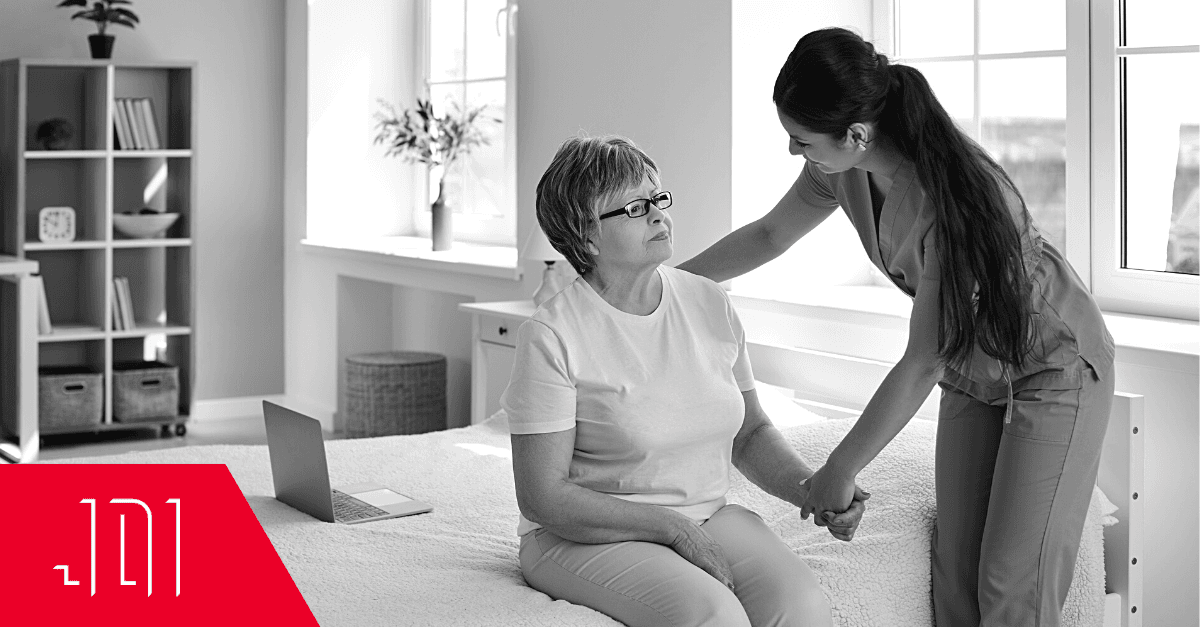Serving the Digital Healthcare Needs of the Baby Boomer Generation
The healthcare landscape was radically transformed in response to the COVID-19 pandemic. The necessity of minimizing in-person contact led to an explosion in the use of telehealth and digital medicine across every field. These digital platforms provided a vital way to diagnose common and simple illnesses and provide supervised treatment for more intensive ones, all without breaking quarantine. The convenience and efficiency of these platforms ensured their continued use well beyond the pandemic, covering a wide range of healthcare services, including mental healthcare, physical therapy, and routine physician visits.
However, the pandemic also exacerbated existing pressures on an already strained system in the United States. The demand for healthcare professionals continues to increase, outpacing the available supply of doctors, nurses, and caregivers. The focus has been on optimizing and digitizing our healthcare system to keep up with this demand. By 2025, the global digital healthcare market is expected to reach $650 billion. For telemedicine alone, the market was valued at $50 billion in 2019 and is expected to reach $460 billion by 2030. Digital healthcare, in all forms, is an exploding market — but is it ready for the Baby Boomers?
Born between 1946 and 1964, Baby Boomers account for the second largest age segment of the population at just over 20% in the US. The generation is entering into the realm of senior care, and while hospitals, doctors, and caregivers are bracing for impact, healthtech and telemedicine lag behind.
Tech that Cares
Digital health technologies can improve care quality and activate patients to achieve better health outcomes. Older adults, in particular, stand to benefit from these technologies due to the complexity of managing multiple health conditions, the need for frequent and real-time care, and the challenges of adhering to care management recommendations introduced by the normal aging process.
The challenge is overcoming the biases and skepticism towards digital health from older adults. Research indicates that older adults are both willing and capable of using tech: as of 2021, 61% of older American adults owned a smartphone, a significant increase from 27% in 2015. But the adoption rates of digital healthcare technologies are not nearly as good, with under 30% of Baby Boomers engaging with digital health. The notion that older adults are unwilling or incapable of using technology is outdated — and digital health leaders need to start serving this key market segment.
These technologies can facilitate the prevention and management of chronic diseases, possibly enhancing older adults' ability to effectively self-manage their health — a crucial concern for a group who used to be known as “The Me Generation.” To achieve this, they must exhibit patient activation, demonstrating the willingness and ability to take independent actions to manage their health and care. Studies have reported high adherence rates among older adults using digital health technologies, suggesting that they can adapt well to these solutions if introduced appropriately.
However, it's crucial to note that while older adults see the value of digital technologies for health, they prefer these technologies to play a complementary or supportive role rather than a primary one in their care. The design and deployment of these technologies must consider older adults' perceptions and attitudes toward them. To serve the healthcare needs of the retiring Baby Boomer generation with digital solutions, these technologies must be designed with age-related considerations in mind, such as motor and perceptual capabilities and the growing demand for seniors to age in place.
In the face of these challenges, health tech innovators have a crucial role to play in ensuring their products meet the needs of the older population. This requires dispelling misconceptions about health technology, tailoring user experiences, and consistently delivering on the promised benefits that led to their initial adoption.
As the Baby Boomer generation navigates a complex healthcare landscape, it's becoming clear that well-designed digital health solutions can provide essential support. They can help with day to day tasks, management of chronic conditions, create living medical records, and monitor for safety risks. However, achieving this potential depends on our ability to integrate these tools seamlessly into their lives.
Empowering Solutions
The healthcare sector's digital transformation is progressively addressing the unique needs of the Baby Boomer generation, incorporating age-related considerations and perceptions into the design and deployment of health tech solutions. By focusing on user-friendly and practical designs that deliver value, these solutions are helping this generation live independently and actively participate in managing their health.
To help meet the overwhelming demand to age in place, Labrador Systems offers a new generation of assistive robots to help people live more independently. The robots are easy to use and can be controlled through various options, like an app on a smartphone or tablet or voice commands. They offer practical assistance in daily activities, such as delivering meals, carrying laundry, or keeping critical items within reach, working as an extra pair of hands.
Less invasively, smart home integrations allow passive monitoring devices to monitor health and communicate when needed. Nobi is a smart light fixture that can quickly alert caregivers if a user falls, helping cut down on response time. Norbert Health has created smart sensors that monitor blood pressure, temperature, blood oxygenation levels, and blood pressure. These sensors help to build a living, electronic health record, which can assist with ongoing care or diagnostics.
Digital health technologies have the incredible potential to improve the quality of life for everyone, including the Baby Boomer generation. With intentional design and careful consideration of user needs, these technologies can be a valuable addition to traditional care, leaving users feeling more empowered on their healthcare journey. As we move forward, the continued development and adoption of such technologies will be crucial in addressing the needs of an aging population, encouraging active patient participation, and improving health outcomes for the Baby Boomers.





